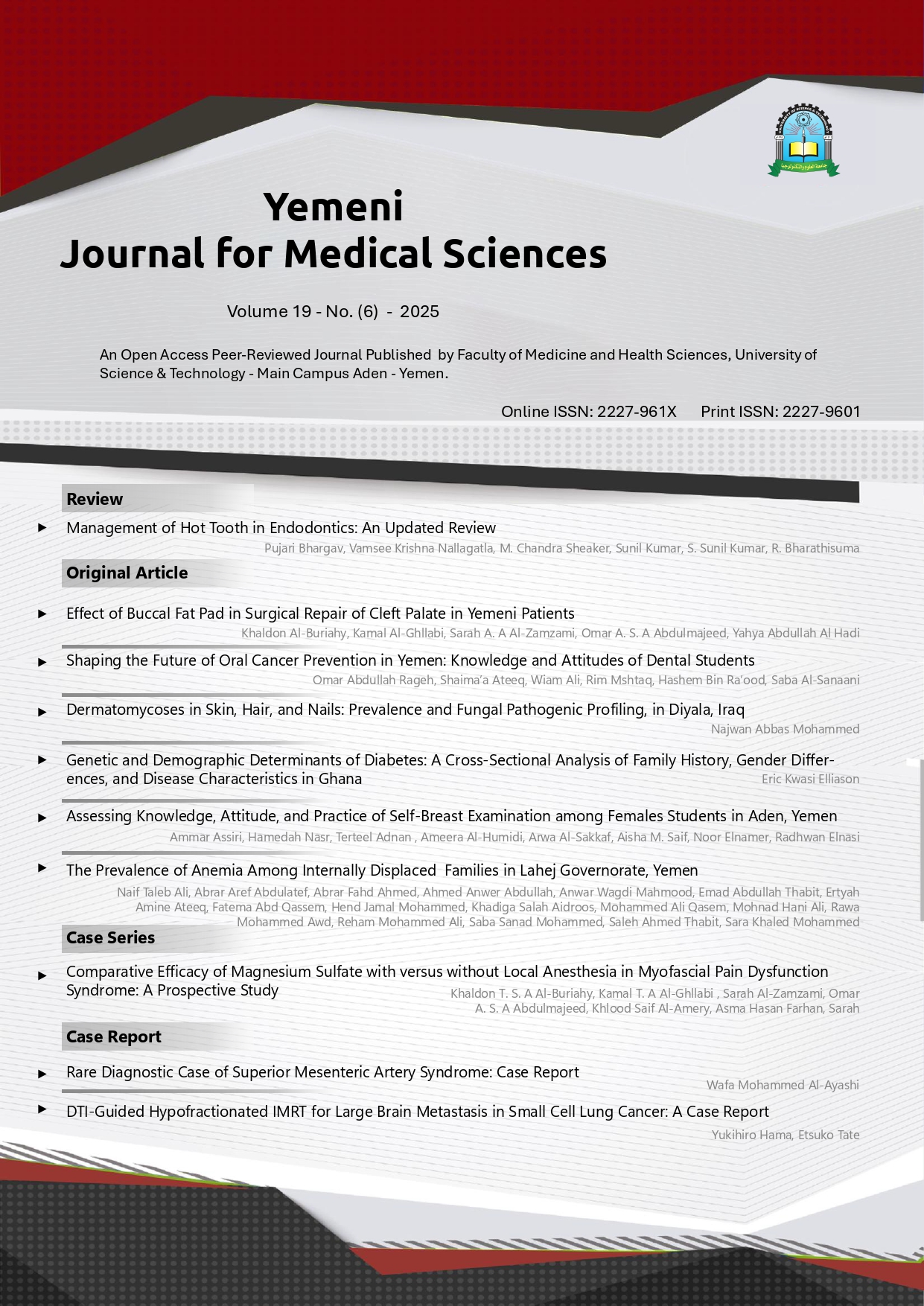Effect of Buccal Fat Pad in Surgical Repair of Cleft Palate in Yemeni Patients
##plugins.themes.bootstrap3.article.main##
الملخص
Background: Cleft palate represents a prevalent congenital orofacial anomaly arising from disrupted embryological fusion of the palatal shelves during the 6th to 12th weeks of gestation.
Objective: This study aimed to assess the clinical utility of buccal fat pad (BFP) augmentation in reducing postoperative oronasal fistula incidence and optimizing surgical outcomes during primary cleft palate repair in a resource-limited Yemeni population.
Methods: This study is a prospective randomized controlled trial study. Twenty pediatric patients (aged 1–6 years) with non-syndromic cleft palate (Veau classification I–III) were enrolled at Al Kuwait Hospital, Sana’a, Yemen. Participants were stratified into two cohorts via block randomization: an experimental group (n=10) underwent BFP-integrated palatoplasty, while the control group (n=10) received conventional layered closure without BFP. Surgical procedures were standardized under general anesthesia, with BFP harvested via intraoral dissection and transposed to reinforce the nasal and oral mucosal layers. Postoperative follow-up spanned six weeks, with outcomes evaluated by blinded independent clinicians using the Pittsburgh Fistula Classification System.
Results: The BFP cohort demonstrated a 90% surgical success rate (9/10 cases; 95% CI: 60.1–99.0%), compared to 40% in the control group (4/10; 95% CI: 16.8–68.7%), yielding a statistically significant risk difference of 50% (Fisher’s exact test, p = 0.033). Oronasal fistulas developed in 10% (1/10) of BFP-augmented cases versus 60% (6/10) of controls (p = 0.025). No significant intergroup differences were observed in postoperative infection rates (10% vs. 20%, p = 0.53) or wound dehiscence.
Conclusion: BFP-augmented palatoplasty significantly reduces oronasal fistula risk and enhances procedural efficacy in cleft palate repair, offering a cost-effective, anatomically advantageous solution for low-resource surgical settings. These findings advocate for the integration of BFP techniques into global cleft care protocols to mitigate reoperation burdens and improve quality of life in underserved populations. Further longitudinal studies are warranted to evaluate long-term functional outcomes and scalability across diverse healthcare contexts.
##plugins.themes.bootstrap3.article.details##

هذا العمل مرخص بموجب Creative Commons Attribution 4.0 International License.
تلتزم المجلة اليمنية للعلوم الطبية رخصة مؤسسة المشاع الإبداعي من فئة (CC BY)، والتي تتيح إعادة استخدام البحث بأي شكل من الأشكال شريطة الاستشهاد بالمؤلف (المؤلفين) والمجلة. وتعتبر المجلة أن المؤلف (المؤلفون) موافق على هذه السياسة بمجرد تقديم البحث للنشر.








